I travel to New Orleans between semesters whenever I can, and on my last trip I started putting together a photo essay on the real locations mentioned in A Confederacy of Dunces, one of my favorite novels. Well, it turned out to be a bigger project than I had expected, of course! Many of the locations are quite easy to find; in some ways, New Orleans has not changed much since John Kennedy Toole wrote this novel in the 1960s, despite multiple devastating hurricanes and both natural and manmade disasters. In fact, there is much about New Orleans that hasn’t changed in well over 100 years! Some poorer neighborhoods have become gentrified and other areas have not recovered from Hurricane Katrina and probably never will. Some of Toole’s locations were “fictionalized” but it is still fairly easy to figure out what parts of town, businesses, and homes they were based on, so I use those as guides when an exact, literal location is not immediately evident. This photo essay is a work in progress that will probably be in progress for quite some time. It is my hope that anyone who looks at it will enjoy it, and my aim was to provide my students as well as any other interested parties with a visual guide to the novel. My captions are light-hearted and anyone who has read the book will get the jokes!
New Orleans is one of the most unusual cities in America. And it’s not all about Mardi Gras and Bourbon Street; there is much more to see, do, and understand about this unique city. For example, one highlight is Tremé, the oldest African-American neighborhood in the U.S.; the HBO TV show set and filmed in this neighborhood has brought much-needed money and jobs to NOLA. African-American history is extremely important in NOLA and there are many museums and cultural centers that reflect this history.
NOLA, and by extension all of Louisiana, is the last part of the Louisiana Purchase that retains its French culture and language...well, some folks might not feel that the two dialects of Louisiana French—Cajun and Creole—bear much resemblance to modern French, but they represent the heritage of the state and if no one else can understand them, at least the Cajuns and Creoles can understand each other!
Spain oversaw the city off and on in its history almost as much as France did and this is why the streets in the French Quarter are all named in English, French, and Spanish. Many people will visit NOLA and feel as if they are in Europe, the Caribbean, or Latin America rather than in the United States. In the novel, Ignatius and his mother live in the 3rd ward of the city, which was primarily Irish and German; there are also parts of the city that reflect Italian culture. Some of NOLA’s customs come from Mexico; it was the Duc D’Orleans himself who introduced the Mexican custom of drinking hot chocolate to NOLA. The Duc also kept interesting hours; he would get up at noon, have his hot chocolate, work and take meetings from 2-5:30, and then stop work for the day. Author Ned Sublette says that the city has tried to keep these working hours ever since!
A quick history of the Faubourg Marigny neighborhood, adjacent to the French Quarter. This site also has a petition to sign (you don't have to live in New Orleans to sign it) to keep high-rises out of this residential and historic area: faubourgmarigny.org/historyfm.htm
There’s so much more to say, but any good guidebook can help direct you (or for more insight and info on specific topics including any I’ve forgotten to mention here, email me with a specific question!) and I recommend the following books for more insight into this complex and fascinating culture and its history:
Cable, George W. Strange True Stories of Louisiana. Gretna, LA: Pelican, 2005. Cable wrote many books about NOLA; they are all good. This one was first published in 1888.
Long, Carolyn Morrow. A New Orleans Voudou Priestess: The Legend and Reality of Marie Laveau. Gainseville, FL: University Press of Florida, 2006. Great scholarly study of one of NOLA’s most interesting historical figures.
Saxon, Lyle, et al, eds. Gumbo Ya-Ya: Folk Tales of Louisiana. Gretna, LA: Pelican, 2006. This is the amazing WPA project on Louisiana folklore that published information from the oral tradition that had never before been recorded. Originally published in 1945.
Sublette, Nick. The World That Made New Orleans. Chicago: Lawrence Hill Books, 2008. This is my favorite historical overview of New Orleans.
In addition, there are many fine guidebooks to NOLA but one of my favorites is New Orleans Encounter by Adam Karlin, published by Lonely Planet. It’s pocket-sized and among its virtues is a list of nightclubs that offer free red beans and rice during concerts. How can you lose with information like that?
Then there are the above-ground cemeteries, the music, the food, the cocktails, the architecture, and of course, pirates. In fact, the only bar on Bourbon Street that I recommend is one of Jean Lafitte the pirate’s old haunts, called the Old Absinthe House. The photo of a policewoman leading her horse into a bar (where the bartender fed the horse maraschino cherries) was taken in the Old Absinthe House.
There’s one more reason why NOLA is so special to me: family history. My cousin Gail, who makes a guest appearance in one of the photos, came with me to NOLA and we visited the St. Vincent de Paul cemetery, resting place of our great-aunt Josephine Dumars, who was a nun in New Orleans for more than 40 years. I like to think she’d approve of this photo essay, so I respectfully dedicate this work to her memory.
Thanks also to Francisco Arcaute, award-winning photographer, who helped me out a great deal with this project, never got scared taking photos in really dangerous neighborhoods, and never tired of photographing hot dog carts.
* * *
All photos by Denise Dumars unless otherwise indicated.
Denise Dumars eats a hotdog in New Orleans, setting of A
Confederacy of Dunces.

Doors where Ignatius would have waited for his mom.

Denise and statue of Ignatius at site of D.H. Holmes department
store.

I didn't steal these cashews, but I wanted to!

Mrs. Reilly's 1946 Plymouth before the crash (stock photo).

Ignatius and Irene run around the corner from Canal St. onto
Bourbon St. to avoid arrest.

Night of Joy bar must have morphed into this place.

Cousin Gail has a Dixie beer, just like Irene!

Dorian is in the wrong bar; he should have tried this one.
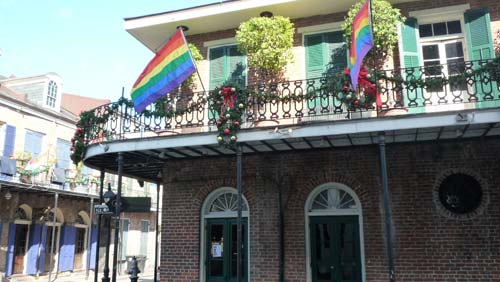
Ignatius goes to the Prytania theater where he disrupts the
show (Francisco Arcaute photo).
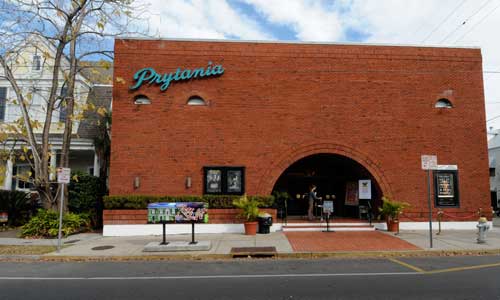
Mrs. Reilly's coffee is just as good as the coffee at the
French Market.
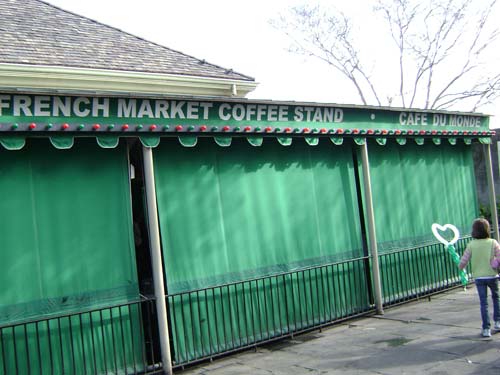
Café du Monde, French Market.
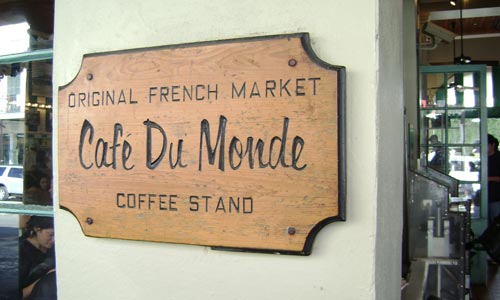
Coffee menu at the French Market.

Mancuso admires the beautiful oaks on St. Charles.
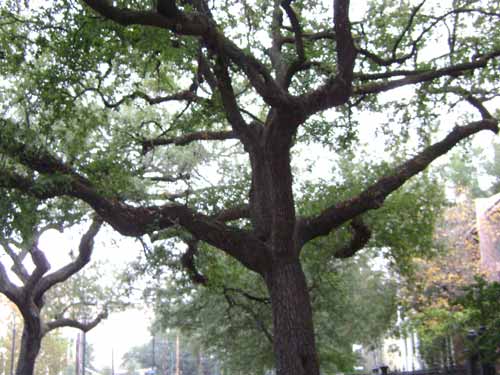
Mrs. O'Reilly has only $150 in the Hibernia Homestead Bank.

Mr. Gonzalez's view from his office at Levy Pants.

Officer Mancuso gets in trouble on the St. Charles Streetcar.
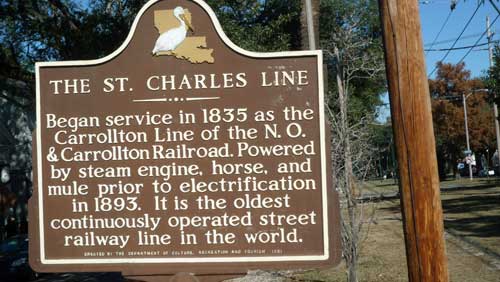
A combination corner store/bar similar to Mattie's Ramble
Inn, where Jones hangs out. (Francisco Arcaute photo).

Irene and Claude go on a date to the Orpheum Theater.

An "animal act" on Bourbon St. at the Old Absinthe
House.

The 3 girls get arrested for trashing the restaurant at this
corner.

Ignatius tried to put the cat into the bun bin.
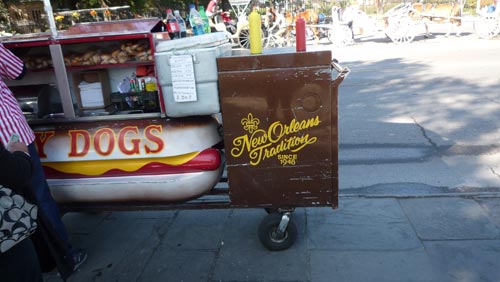
Bad art in Pirate's Alley for Dorian and Ignatius to make
fun of.

Dorian's house is getting painted.

Ignatius's house, smallest on the block.


